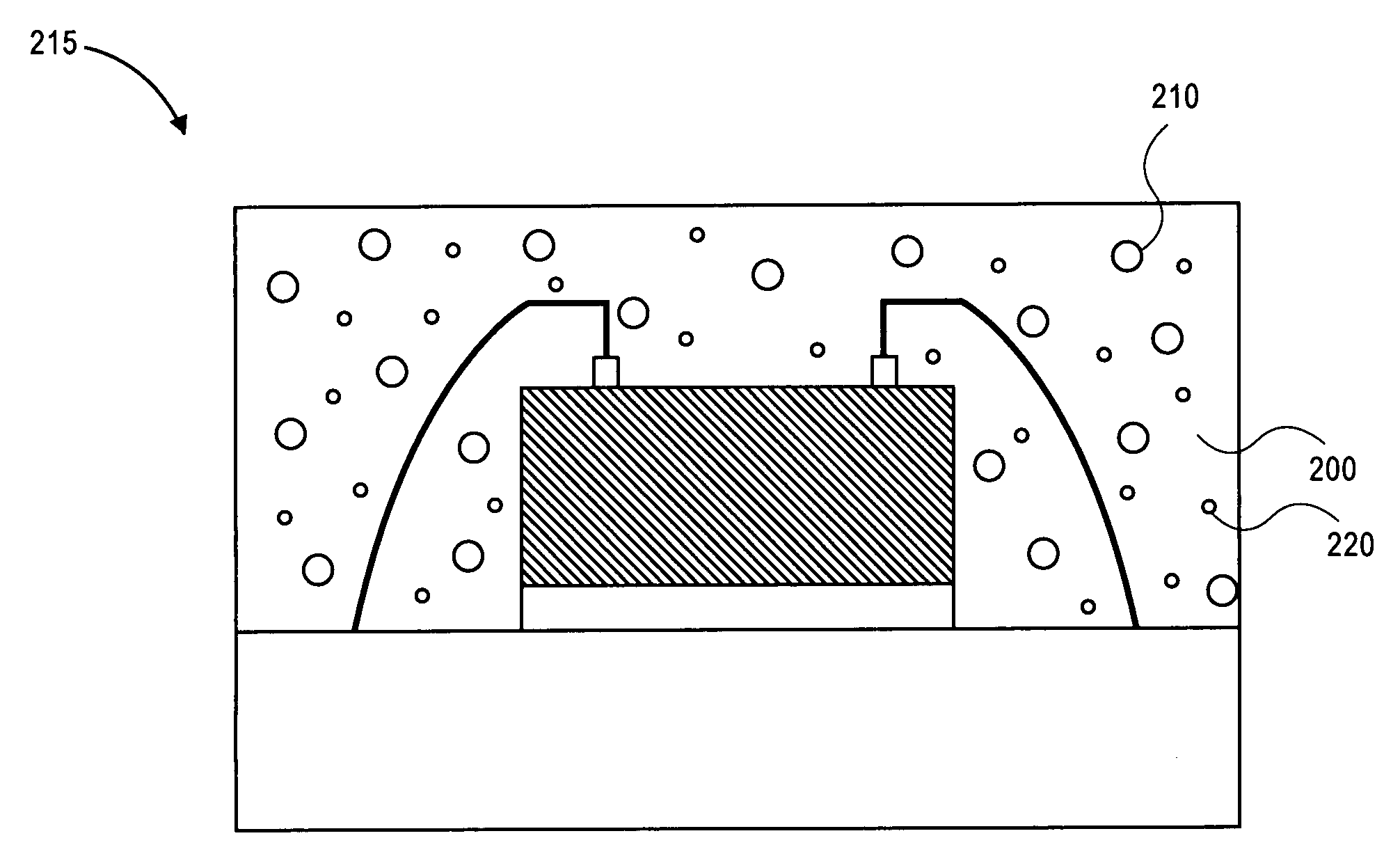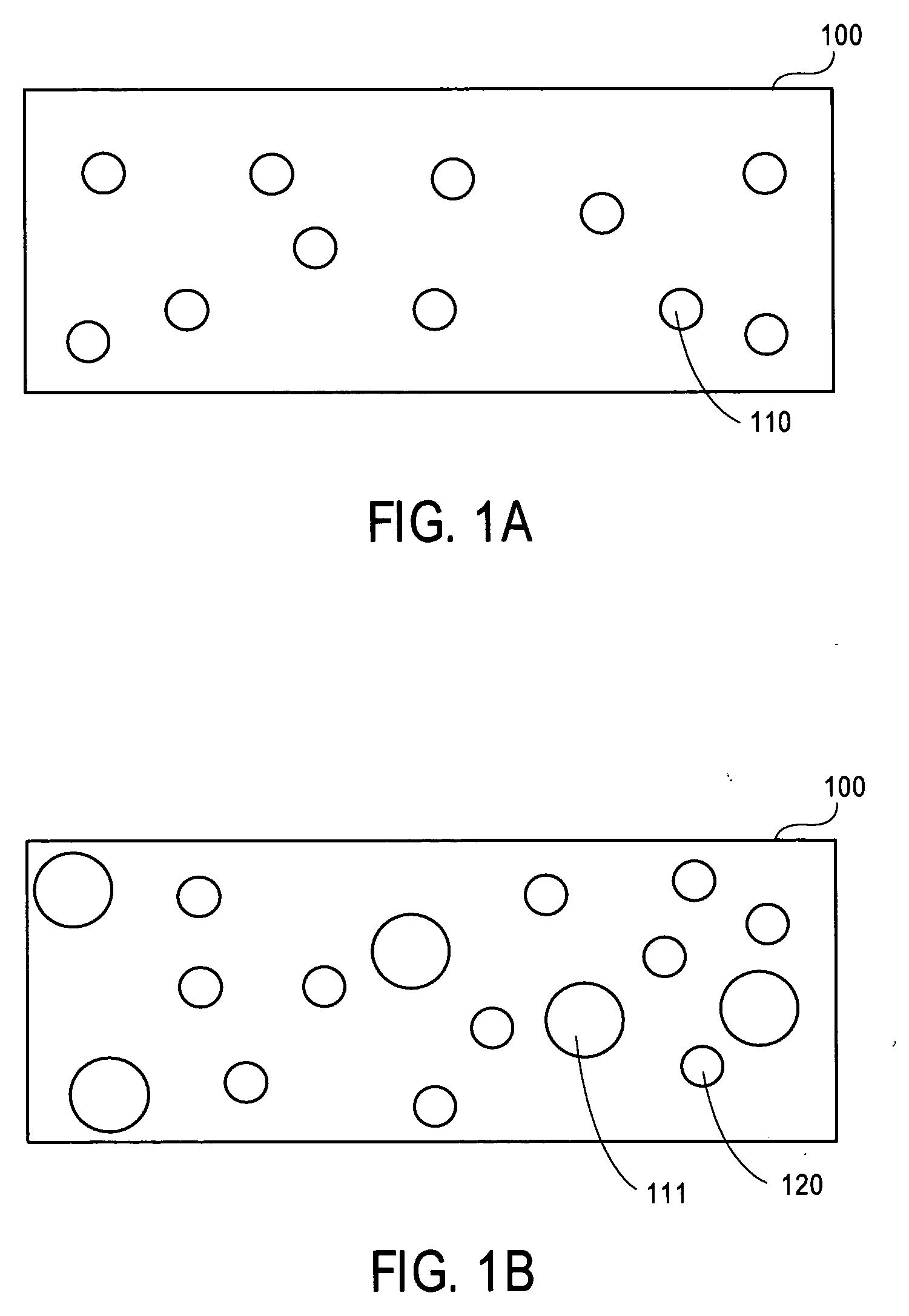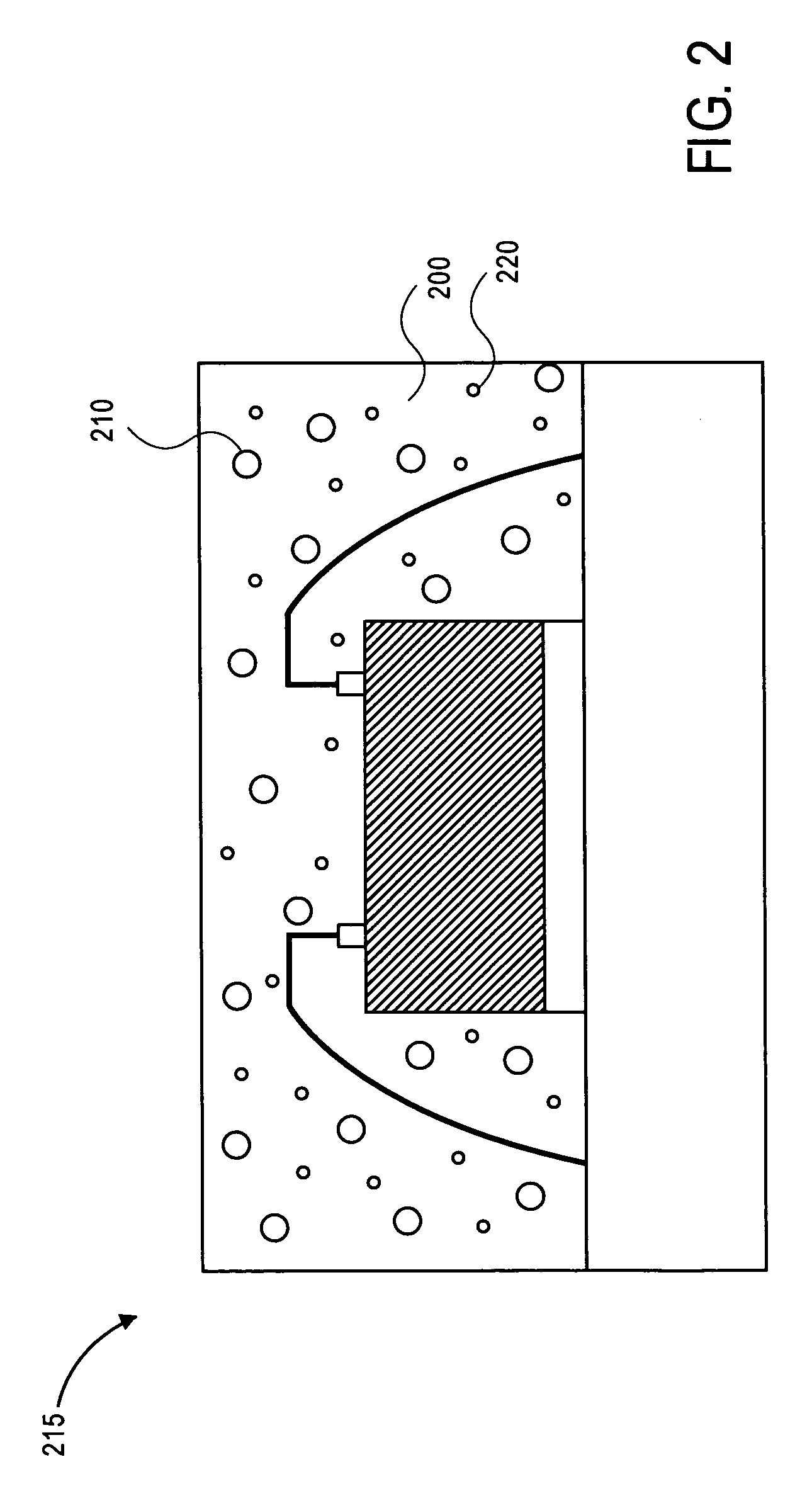Negative thermal expansion material filler for low CTE composites
a technology of thermal expansion material and composites, applied in the direction of coatings, basic electric elements, solid-state devices, etc., can solve the problems of high filler loading, thermal, mechanical or other functional problems, and increase the loading of high-temperature composite materials
- Summary
- Abstract
- Description
- Claims
- Application Information
AI Technical Summary
Problems solved by technology
Method used
Image
Examples
Embodiment Construction
[0012] The present invention includes a composite including a polymer and nanometer size, negative coefficient of thermal expansion (NTE) filler particles. The application of nanometer size NTE filler particles may decrease the loading criteria of fillers in thermoset composites. In other embodiments, the present invention includes a composite including a polymer and a bi-modal size distribution of NTE filler particles. The application of bi-modal size distribution of NTE filler particles may decrease the loading criteria in thermoset composites by accomplishing greater packing as smaller filler particles fill intersticial sites created by bigger filler particles. In yet another embodiment, a composite including a polymer and hafnium tungstate fillers may be used to decrease the coefficient of thermal expansion (CTE) for semiconductor packaging applications.
[0013]FIG. 1A is an illustration of a composite 100 having a polymer and NTE filler particles 110 disposed within according to...
PUM
| Property | Measurement | Unit |
|---|---|---|
| Fraction | aaaaa | aaaaa |
| Size distribution | aaaaa | aaaaa |
| Weight ratio | aaaaa | aaaaa |
Abstract
Description
Claims
Application Information
 Login to View More
Login to View More - R&D
- Intellectual Property
- Life Sciences
- Materials
- Tech Scout
- Unparalleled Data Quality
- Higher Quality Content
- 60% Fewer Hallucinations
Browse by: Latest US Patents, China's latest patents, Technical Efficacy Thesaurus, Application Domain, Technology Topic, Popular Technical Reports.
© 2025 PatSnap. All rights reserved.Legal|Privacy policy|Modern Slavery Act Transparency Statement|Sitemap|About US| Contact US: help@patsnap.com



